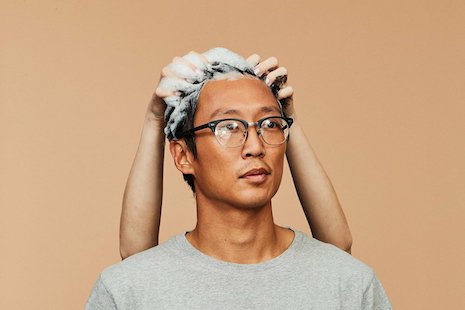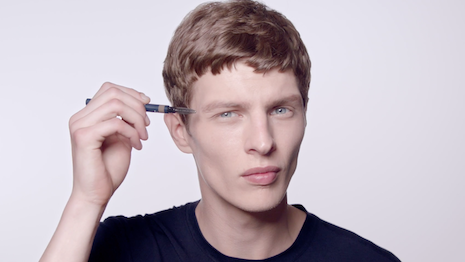 Clarins has reinvented its brand to reach a new generation of consumers. Image credit: Clarins
Clarins has reinvented its brand to reach a new generation of consumers. Image credit: Clarins
Premium and luxury beauty brands are facing growing competition from mass players, since the messaging that resonates with consumers is more than skin deep.
A webinar hosted by Euromonitor on June 26 delved into the key forces driving the beauty business today, from wellness and body positivity to male makeup. While premium labels continue to outperform mass brands, today there is less separation between the two in the mind of the consumer as health becomes a greater concern than aesthetics.
“As new consumer values shift towards more meaningful consumption, priorities are being reassessed, paving the way for new luxury attributes beyond a higher price tag and other traditional premium perceptions," said Hannah Symons, industry manager, beauty and personal care at Euromonitor. "Today’s status symbols are health and good intentions, which as a marketing message is easier to convey at any price point than the aspirational codes we’ve seen before."
Beauty boom
Currently, the global beauty business is valued at $488 billion, and it is rising at a compound annual growth rate of 6 percent.
More than 50 percent of millennials say that their idea of beauty is being healthy, and millennials and Gen Z consumers are more apt to say that they are searching for confidence.
Meanwhile, Gen X and baby boomer clientele are moved by a desire to be healthy and youthful, replacing older ideas of anti-aging. Over one-third of those over the age of 60 feel they do not need anti-aging products.
Reflecting consumers’ health goals, skincare is the largest category, and it outperformed the beauty average with 8 percent growth. Euromonitor sees an opening for skincare products that cater to certain health needs, such as formulas for those battling cancer or menopausal women.
Part of the wellness movement is the acceptance of previously stigmatized topics, from sexual health to mental health.
This has opened the door for both new brands and product expansion from existing labels. For instance, startup Hims looks to create a positivity around men’s health issues by selling everything from hair and skincare to medicines in a direct-to-consumer model.
 Hims has broken out with a DTC model. Image credit: Hims
Wellness is also contributing to the rise of cannabis. Products with CBD offer medicinal properties, appealing to consumers’ desire for more naturally based beauty.
Department store chain Neiman Marcus recently began stocking its beauty shelves with high-end CBD products, also known as cannabis beauty products, hitting an emerging trend early on. The offering is part of the department store’s Trending Beauty initiative, in the hopes of tapping into the potential of more unknown brands and products (see story).
“As health becomes intrinsic in every brand strategy, cannabis’ therapeutic credentials present an investment opportunity that can be explored either through brand reinvention or external acquisition,” said Irina Barbalova, global lead, health and beauty at Euromonitor.
Teens are even more concerned with transparency than the average consumer. Another entry point to younger consumers is through preventative skincare, such as acne treatments.
Beyond health players, beauty is being disrupted by brands that are playing into changing consumer values and new untapped opportunities.
For instance, Rihanna’s Fenty Beauty was an “innovator” by showing the need for makeup in more diverse shades, impacting how other brands develop products.
Hims has broken out with a DTC model. Image credit: Hims
Wellness is also contributing to the rise of cannabis. Products with CBD offer medicinal properties, appealing to consumers’ desire for more naturally based beauty.
Department store chain Neiman Marcus recently began stocking its beauty shelves with high-end CBD products, also known as cannabis beauty products, hitting an emerging trend early on. The offering is part of the department store’s Trending Beauty initiative, in the hopes of tapping into the potential of more unknown brands and products (see story).
“As health becomes intrinsic in every brand strategy, cannabis’ therapeutic credentials present an investment opportunity that can be explored either through brand reinvention or external acquisition,” said Irina Barbalova, global lead, health and beauty at Euromonitor.
Teens are even more concerned with transparency than the average consumer. Another entry point to younger consumers is through preventative skincare, such as acne treatments.
Beyond health players, beauty is being disrupted by brands that are playing into changing consumer values and new untapped opportunities.
For instance, Rihanna’s Fenty Beauty was an “innovator” by showing the need for makeup in more diverse shades, impacting how other brands develop products.
 Fenty Beauty foundation. Image credit: Fenty Beauty
Meanwhile, Kylie Cosmetics has been an “insurgent,” with a differentiated image of beauty and a narrow and leaner product assortment. The challenge for insurgents can be sustaining long-term results in competition with big beauty groups.
Another disruptor model is the established heritage label that reinvents aspects of its business for the modern consumer, such as brands remaking formulas to be more eco-friendly or cleaner.
How consumers discover and shop for beauty is also shifting. Forty percent of women have used a subscription beauty service.
Ecommerce is significant, with a quarter of consumers globally buying beauty online at least once a month. This is even higher for China, where 27 percent of all beauty purchases are made online.
Digital’s role in research is also growing. Millennials say they are more influenced by online reviews and communities for skincare purchases than they are by blogs. However, word of mouth from people they know still tops online communities.
Men's beauty
There is a growing demand for male beauty offerings. In 2018, men’s grooming products were up 5 percent.
Part of what is driving this change is shifting gender norms, as more men take on caregiving roles or work outside the traditional office environment.
Makeup for men in particular is seeing more popularity in Asia than in other markets. Fifteen percent of Asian men wear foundation at least once a week, compared to just 7 percent in the United States.
Additionally, more than 20 percent of men wear BB or CC creams.
Last year, French fashion label Chanel launched its first makeup products for men globally as more luxury cosmetic companies cater to male consumers.
While men have always been able to purchase cosmetics and skincare products, most luxury brands dedicate their personal care resources to female consumers. By appealing to men beyond masculine fragrances, Chanel can reach a new market and present a forward-thinking identity (see story).
Fenty Beauty foundation. Image credit: Fenty Beauty
Meanwhile, Kylie Cosmetics has been an “insurgent,” with a differentiated image of beauty and a narrow and leaner product assortment. The challenge for insurgents can be sustaining long-term results in competition with big beauty groups.
Another disruptor model is the established heritage label that reinvents aspects of its business for the modern consumer, such as brands remaking formulas to be more eco-friendly or cleaner.
How consumers discover and shop for beauty is also shifting. Forty percent of women have used a subscription beauty service.
Ecommerce is significant, with a quarter of consumers globally buying beauty online at least once a month. This is even higher for China, where 27 percent of all beauty purchases are made online.
Digital’s role in research is also growing. Millennials say they are more influenced by online reviews and communities for skincare purchases than they are by blogs. However, word of mouth from people they know still tops online communities.
Men's beauty
There is a growing demand for male beauty offerings. In 2018, men’s grooming products were up 5 percent.
Part of what is driving this change is shifting gender norms, as more men take on caregiving roles or work outside the traditional office environment.
Makeup for men in particular is seeing more popularity in Asia than in other markets. Fifteen percent of Asian men wear foundation at least once a week, compared to just 7 percent in the United States.
Additionally, more than 20 percent of men wear BB or CC creams.
Last year, French fashion label Chanel launched its first makeup products for men globally as more luxury cosmetic companies cater to male consumers.
While men have always been able to purchase cosmetics and skincare products, most luxury brands dedicate their personal care resources to female consumers. By appealing to men beyond masculine fragrances, Chanel can reach a new market and present a forward-thinking identity (see story).
 Chanel shared beauty tutorials aimed for men. Image credit: Chanel
Ms. Symons noted that men are typically focused on products that have functions, and they also tend to be creatures of habit, making it a challenge for new brands and products.
Men are also more digitally connected, and they prefer to do product trials in their homes, creating a potential opportunity for direct-to-consumer beauty retail.
“As the conversation around men’s needs opens up, new formats, compelling stories and accessible purchase channels will help grow the men’s skincare market to almost double the volume in the next five years than it accrued in the previous five years, with the majority of this growth coming from Asia,” Ms. Symons said.
Chanel shared beauty tutorials aimed for men. Image credit: Chanel
Ms. Symons noted that men are typically focused on products that have functions, and they also tend to be creatures of habit, making it a challenge for new brands and products.
Men are also more digitally connected, and they prefer to do product trials in their homes, creating a potential opportunity for direct-to-consumer beauty retail.
“As the conversation around men’s needs opens up, new formats, compelling stories and accessible purchase channels will help grow the men’s skincare market to almost double the volume in the next five years than it accrued in the previous five years, with the majority of this growth coming from Asia,” Ms. Symons said.
